“I started mewing and now I’m a cat.” – Anon.
Thoughts on mewing. Wait, you may be asking – WTF is “mewing?”
Mewing is a do-it-yourself (DIY) practice – that involves a combination of tongue repositioning and chewing exercises – purported to: (1) reshape aspects of the face (jawline) and (2) mouth (bite & teeth positioning).
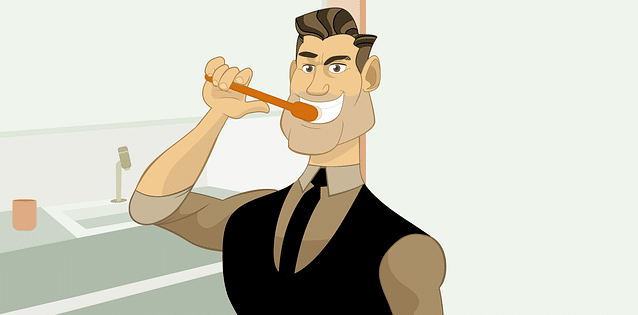
As of 2022 there are over 45K members in a Reddit community called “orthotropics” which promotes the practice of mewing (among a variety of other exercises/tactics).
Proponents of mewing claim that it’s a cheap, effective, non-invasive way to:
- Improve facial appearance (jawline, muscularity, fat %, overall definition)
- Modulate one’s bite & teeth without surgery or orthodontics
- Reduce “mouth breathing”
- Decrease sleep apnea & snoring
- Fix dysphagia & swallowing disorders
- Correct speech disorders
- Remove facial “fat”
Origins of Mewing (Dr. John Mew)
Mewing is a term used to reference a facial restructuring technique prescribed by Dr. John Mew – an orthodontist from the United Kingdom (UK) who graduated in dentistry at the University College London (1948-1953) and from orthognathic surgery at Queen Victoria Hospital (1953-1956).
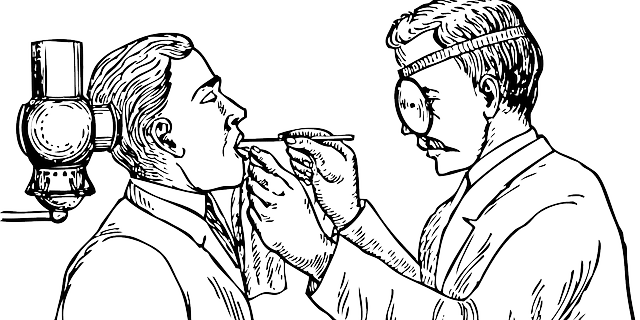
While practicing, Dr. Mew sought alternatives to facial surgery and began developing non-invasive orthodontic methods to correct unattractive vertical growth in the faces of children.
Specifically, Dr. Mew utilized “Orthotropics” to promote horizontal growth of faces – and he’s written 2 textbooks and many articles on this subject.
In 1971 Dr. Mew became president of the Southern Counties Branch of the British Dental Association – and for many years he has lectured others on his techniques as professor of Orthotropics at the London School of Facial Orthotropics.
Dr. Mew’s primary interests include the: (1) etiology of malocclusion (when upper & lower teeth don’t align with closed mouth) and (2) guidance of facial growth.
Other accolades for Dr. Mew include: lifetime membership of British Dental Association; fellowship from International Rotary; Fellowship of the International College of Dentists; Outstanding Achievement Awards from the International Functional Association & International Orthodontic Society; and an award from the American Academy of Physiological Medicine & Dentistry.
To say Dr. Mew is an accomplished orthodontist is clearly an understatement…
Mew was reprimanded in 2010 by the General Dental Council (an organization that regulates dental professionals in the UK) for advertisements in which he claimed the GDC was suppressing his theories. (Mew did NOT dispute the charge and referred to himself as a whistleblower).
Mew’s treatment methods
Mew’s treatment philosophy involved utilizing “orthotropics” (minimally invasive and non-invasive methods) as alternatives to unnecessary orthodontics and orofacial surgeries.

Mew believed that orthotropic interventions yield superior long-term outcomes in both facial appearance (attractiveness) and orofacial functions (breathing, bite/teeth alignment, jaw strength).
Orthotropics
Mew devised “orthotropics” as a method to guide facial growth and prevent malocclusion. This involved widening and advancing the upper jaw with a combination of:
- Palate expanders: Orthodontic devices used to widen the upper jaw.
- Dietary adjustments: Consuming more foods that are “hard” to chew (as opposed to “soft” foods).
- Tongue repositioning (mewing): Adoption of myofunctionally correct tongue resting position – thought to provide an outward force for lateral expansion of the upper jaw).
Mew believes that the cause of malocclusion is completely environmental and that the environment dictates whether teeth become crooked.
Mewing (a non-invasive subcomponent of orthotropics)
This is a DIY-form of oral posture training technique named after John Mew and popularized by his son Michael Mew – rooted in the field of “oral myology” which utilizes “orofacial myofunctional therapy” to improve the facial musculature (tongue, lips, cheeks, jaw, etc.).
Under the 3 primary components of “orthotropic” interventions – “mewing” falls under the tongue repositioning category.
What are the specifics of “mewing”? (Basics)
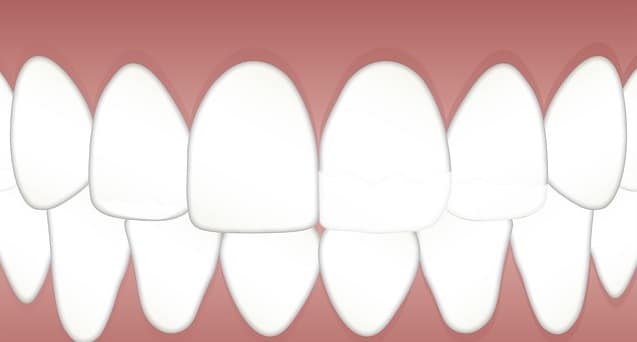
- Close mouth with teeth gently touching
- Position tongue on roof of mouth with light pressure (this should create mild jaw pressure)
- Avoid blocking your airway as you breathe
- Maintain this tongue position as frequently as possible
Additional details (accuracy unconfirmed)
- Lips together, teeth in light contact or slightly apart, tongue on roof of mouth
- Lips should be sealed together comfortably without engaging the mentalis
- Lips should be slightly sucked (lips suction/suction seal) when together
- Tongue tip placed just behind front teeth on incisive papilla
- Most of tongue should be placed on roof of mouth (including posterior third)
- Use suction hold method to easily stick tongue on roof of mouth
- A click sound from quick opening of mouth or lowering tongue is apparently a “good sign” of proper posture (as this is a result of quality suction)
- Elevation of the hyoid bone is a good sign of posterior third engagement
- Inability to mouth breathe while holding the tongue against the palate indicates proper tongue posture
- Some individuals may have a “tongue tie” which prevents them from mewing correctly (this can be surgically corrected)
- Individuals who can’t seal lips should practice the “granny shock exercise” to stretch the philtrum and work the mentalis
Essentially John Mew was a staunch advocate for a reduction in orthodontic surgery and wanted patients to be aware of less invasive or non-invasive alternatives that may produce a beneficial effect – before opting for surgery.
Mew began his career as an oral surgeon and came to believe that most cases reverted or didn’t serve the patient well.
Mew promotes simple ideas that align with paleoanthropological views on the development of healthy jaws and teeth:
- Breathe through your nose (not mouth)
- Chew hard food
- Stand up straight
Various scientists and researchers claim that hunter-gatherers always had room for all 32 teeth.
Research by paleoanthropologists Daniel Lieberman and Peter Ungar supports the hypothesis that human jaws are becoming narrower and teeth are becoming more crowded – due to lifestyle rather than genetics. (R)
Paul Ehrlich (of Stanford University) co-authored the book “Jaws” which documents an epidemic of dysfunction and disease resulting from jaw shrinkage in post-industrial society. (R)
Orthotropics (Journal Publications)
Included below are various articles published on the topic of orthotropics. A subset of these papers are from John Mew – the creator of this method.

Orthotropics: Will We Never Be Free? (R)
- Date: 2014
- Author: Huntley
Huntley (an orthodontist) was reading John Mew’s book in an edition of the British Dental Journal (BDJ) and took issue with the fact that Mew continues getting his “controversial views” published in the BDJ.
Huntley dislikes the fact that Mew has a self-published 354-page book which costs £140. He claims it’s: “of limited relevance to the general practitioner or dental student, but specialists will be able to reach their own conclusions.”
At the time there was no easy way for Huntley to obtain Mew’s book – and as a result he was upset with the BMJ for taking out half of a page in a scientific journal.
Huntley states: “If there were a prospective controlled clinical trial to show the superiority of the techniques he has been promoting for so many years I would of course use them for the benefit of my patients, for that would be my professional duty.”
Huntley further noted that the piece by Mew in the BDJ was an “opinion” article. This orthodontist was somewhat sickened with constant promotion of Mew’s opinions but he claimed that he would “keep an open mind and look at the evidence.”
Based on this short article – it seems as though Huntley wants the BDJ to cease publishing Mew’s work until a rigorous trial actually shows his techniques work.
Facial Changes in Identical Twins Treated by Different Orthodontic Techniques (R)
- Date: 2007
- Author: John Mew
A study was conducted to compare the effects of (A) traditional fixed appliances vs. (B) orthotropic (growth guidance) without fixed appliances on a series of 12 identical twins – 10 years post-treatment.
Facial changes were assessed by a panel of 12 “layman” judges. A comparison was also made of dental changes and an error study conducted.
What were the results?
The results suggested the following:
- Traditional fixed appliances resulted in a less attractive appearance (post-treatment)
- Orthotropics treatment resulted in a more attractive appearance (post-treatment)
- There was minimal difference in the dental results, but traditional cases relapsed more frequently
This study supports the idea that “orthotropics” are superior to traditional fixed appliances for the treatment of dental abnormalities and facial development – and that the effects are likely permanent (sustained ~10-years post treatment).
Limitations: John Mew conducted the study; layperson judges; perhaps suboptimal fixed appliance treatment; unclear if “mewing” was involved or played a significant role in the treatment.
Science Versus Empiricism (R)
- Date: 2005
- Author: John Mew
This was an article published in the BDJ by Mew in which he noted 4 key points:
- Much treatment is empirical rather than scientific.
- There is little consensus on the cause of malocclusion.
- Most treatment corrects the symptoms (e.g. crooked teeth) rather than the root cause.
- There’s unlikely to be a cure until vertical growth can be converted to horizontal growth.
Postural Basis of Malocclusion: Philosophical Overview (R)
- Date: 2004
- Author: John Mew
Most believe that malocclusion is inherited – but Mew states that recent emphasis has been put on environmental factors influencing malocclusion such as the activity and posture of oral soft tissues.
Mew admits that it’s impossible to measure long-term posture with precision and that this has likely decreased its importance as an etiological factor.
Mew states: It remains unclear as to what extent posture and parafunction are inherited – but there is no doubt that facial and dental structures are (at times) strongly influenced by soft tissues and that some malocclusions have a postural basis.
Suggestions for Forecasting & Monitoring Facial Growth (R)
- Date: 1993
- Author: John Mew
This is a publication by Mew in which he discusses previous and new research on the basis of facial attractiveness – and describes methods for which these can be indexed.
He also gives suggestions for predicting facial growth and evaluation of the growth before, during, and after treatment.
In this paper Mew mentions an “indicator line,” “cheek line,” and “lower indicator line” for evaluation of facial aesthetics and growth forecasting – and discusses the difference between “low angle” cases and “high angle” cases (specific facial/structure formations).
Mew states that there is increasing interest in influencing facial growth (orthotropics) while patients are young – and that this may be preferred over actually moving teeth (orthodontics) or the bone (orthopedics).
“As the skeleton is half grown at 3 years of age, and probably more than three quarters grown by 8 years, orthotropics is normally recommended before the age of 9 years – and in severe cases before 6 years.”
An improvement in the direction of growth can provide subtle benefits to the appearance of one’s face – specifically the eyes.
My thoughts? It makes logical sense that orthotropics would be most effective for younger individuals based on age-related malleability/plasticity of skeletal components.
What can we conclude from the research of orthotropics?
Not much. Why? Because trials were not unbiased (all done by John Mew). Mew’s personal bias in favor of his own practice (orthotropics) relative to conventional care (orthodontics & oral surgery) may have influenced research outcomes.
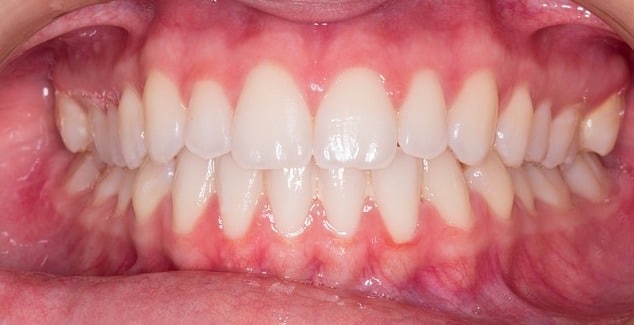
Based on what we know about bone, jaw, teeth/bite development – it should be obvious that orthotropics are capable of significantly altering orofacial development in children.
However, even Mew admitted that orthotropics are unlikely to help after the age of 9 – and severe orofacial issues may require orthotropics before age 6 for favorable outcomes.
We can conclude that orthotropics are likely only effective in youth – and probably not very effective beyond a certain age due to lack of orofacial malleability in adulthood.
At this time, it remains unclear as to whether orthotropics, mewing, jaw exercises, etc. – are as time/effort-effective (amount of time/effort invested relative to results) relative to conventional orthodontics.
Orthotropics are significantly less invasive (obviously) but it’s unclear as to whether the costs would be significantly less these days.
The costs would obviously be less if self-administered without guidance of an orthodontist (but this could yield deleterious outcomes).
Under the guidance of an orthodontist – there may be fewer total appointments needed for orthotropic advice/consults and teeth/bite evaluation – but these consults would still prove somewhat costly (exams aren’t cheap by professionals).
There may be more side effects and/or adverse events associated with orthodontics than orthotropics (assuming each employed under guidance of an orthodontist) but this hasn’t been proven.
Instead, it is likely that suboptimal orthodontic or orthotropic intervention could create unwanted adverse effects.
Therefore, a skilled dental/orthodontic professional may be more important than the method used.
Most current dentists/orthodontists are NOT familiar with John Mew and “orthotropics” and “mewing” techniques – and have no good reason to study these interventions relative to conventional orthodontist techniques.
The writing from one orthodontist (Huntley) indicates that a subset of ortho professionals are tired of hearing about “orthotropics.”
A dentist’s (D.D.S.) thoughts on orthotropics & mewing…
While writing this article, I contacted a dentist for his thoughts and opinions on “mewing” and “orthotropics.”
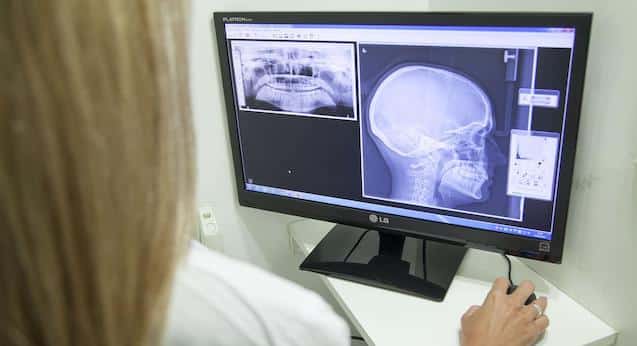
The dentist had never heard of “mewing” specifically and wanted an explanation – so I gave him some resources and he reviewed the information.
He thought that “orthotropics” could likely be highly-effective in younger patients (e.g. children) due to heightened orofacial malleability in youth.
This dentist also believed that the success rate of well-devised orthotropics could be high.
He claimed that in his practice he commonly sees individuals who had unnecessary “orthodontics” or “oral surgery” as children – and that these interventions can yield unfavorable and adverse outcomes years later (in adulthood).
Additionally, this dentist recalled attending an orthodontic lecture in which the orthodontist lecturer emphasized that pediatrics (children) don’t need much pressure to produce significant changes or shifts in bite/teeth/jaw alignment.
Regarding the practice of “mewing” in particular – he thought that this subcomponent could have a legitimate and significant effect in young patients (e.g. children).
With regard to the theory that “chewing soft food” can lead to an underdeveloped jaw, etc. – he says its nuanced.
He discussed the fact that everyone has a unique skeletal structure and formation from birth.
Some individuals have major jaw recession present from birth (for various reasons) that no amount of “chewing hard food” will fix.
However, he suggested that “chewing hard food” in development likely has some degree of impact on bite/teeth/jaw development.
Therefore, he thinks that Mew’s theory here is plausible and likely accurate with regard to youth.
He did want to emphasize caution with regard to “chewing hard food” and “jaw exercises” – noting that this could potentially damage teeth (enamel issues) and/or increase rates of TMJ (temporomandibular joint dysfunction) in certain individuals (depending on the “hardness” and “frequency” of the chewing).
What about in adult patients? This dentist thought that using “orthotropics” in adult patients may have some effect but that it would ultimately not be significant or lasting without regular intervention.
For adults he thinks conventional orthodontics and facial plastic surgery are the best options for treating any bite/teeth/jawline issues – and that orthotropics and “mewing” specifically are unlikely to generate significant results in adult patients.
Does mewing significantly improve facial appearance & jawline?
Unknown due to lack of robust investigation. As of current there are no large-scale studies to support the idea that mewing has a significant effect on facial appearance, malocclusion, etc.
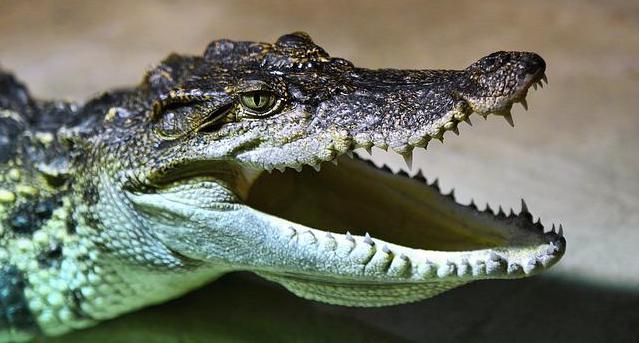
Anecdotally there are many individuals who claim that mewing significantly improved their jawline, however, many of these individuals are selling “courses” or “lifestyle consulting” to other individuals who are desperate to get the same results.
Moreover, a subset of individuals promoting mewing have favorable jaw development and attribute this development mostly to the act of “mewing” to sell: mewing-related products; consulting; or other jaw-strengthening devices.
The theory from Dr. Mew is that chronic consumption of “soft foods” cause the palate to collapse – ultimately affecting orofacial development and skull shape.
It is likely that orthotropics has a significant effect on jaw development (among other things) for pediatrics (as they have more malleable/plastic orofacial structures) – and mewing may serve as an adjunct to improve facial features.
In adults the standalone act of “mewing” probably won’t have any significant effect.
It may have a negligible effect in some individuals when combined with other orthotropic interventions – but this will unlikely be significant.
Going from virtually no jaw to a “dummy thicc” jaw overnight is not gonna happen.
Does mewing even do anything?
Unclear. Absence of evidence isn’t absence of evidence. But it’s also not evidence that this technique is safe and effective – particularly without guidance/supervision from a dentist/orthodontist (many are doing this unsupervised).
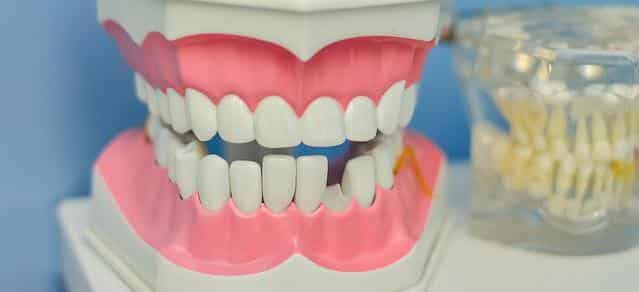
The burden of proof is on the one making the claim that it works. And no – a random “before & after” picture on Reddit or some other forum is not scientific proof that this technique works.
Dentists stating that there’s no evidence this technique works is because there are zero robust clinical trials showing that mewing is safe and effective for the improvement of orofacial development and/or alignment.
These dentists are not telling you to avoid mewing because they’re “greedy” and want your money from conventional therapies.
Dentists want to use methods that have been well-studied and proven both safe and effective in long-term clinical trials.
Note: Remember that “mewing” is one component of orthotropics and it’s unknown as to how significant its individual effect is in bite/teeth alignment shifts and jawline enhancement.
How do John Mew’s views differ from conventional orthodontics?
Conventional orthodontics suggests that straight or crooked teeth are mostly a product of genetics – whereas Mew believes that crooked teeth result from changes in lifestyle and environment since the 18th century (e.g. consuming soft foods) which cause the jaws to grow small and become recessed.
Who is correct here? In my opinion it’s a combination of both.
It is likely that bone/jaw structure at birth has a significant effect, genetics have an effect, and environment has an effect.
Environment is relatively easy to manipulate which makes orthotropics appealing.
The combination of orthodontics and various components of orthotropics in youth probably would yield high success rates in terms of improving facial appearance (e.g. jawline) and bite/teeth alignment.
What about the “transformations” online?
Not many consider that “influencers” may be looking to financially capitalize off of individuals hoping to improve facial appearance with mewing.

Anecdotes from Social Media “Influencers”
Connor Murphy
Mewed for 30 days while “fasting” and claimed it dramatically enhanced his jawline. (Once again, complete video/picture manipulation by an influencer. Derek from MPMD debunked this entire video.) Complete BS marketing in this video. Jawline enhancement likely from weight loss (which reduces facial fat).
Cam Jones (Goal Guys)
A vlogger at the YouTube “Goal Guys” who tested mewing for 30 days and claimed to notice subjective improvements (e.g. breathing better).
He spoke with a scientist or medical doctor who discussed: (A) lack of quality evidence; (B) cognitive biases; (C) placebo effect (increased by participation & feeling like making positive lifestyle change).
Tina Tomato
Did a 20-month mewing experiment and reports that she likes her face more after.
Because there is no independent evaluation of her facial measurements before/after and that she’s using the same camera lens/distance from camera, etc. – unknown as to whether her transformation occurred at all let alone is significant.
(She also sells a product that may help with mewing called Vline Lifting Band.)
Derek (MPMD)
Derek from MorePlatesMoreDates (the YouTube channel) did a 1-year mewing experiment and discussed it on his channel.
However, he’s continuing his experiment beyond 1 year because he doesn’t consider it a big hassle or time investment – plus he can now “mew in his sleep” after treating sleep apnea.
He thinks that mewing may have improved his “nasal labial folds” – but other factors could’ve also played a role in this as well.
Note: There are likely a bunch of other “influencers” that have done mewing experiments but I’m not going to cover them all.
Types of influencers mewing…
- Honest self-experiment: These individuals are genuinely curious about whether mewing works and are objective in “before” and “after” assessments.
- Delusional self-experiment: These individuals may be genuinely curious about whether mewing works but are not objective in “before” and “after assessments (engineer a false “transformation” or placebo themselves into thinking it worked).
- Sheer clickbait & marketing: Some influencers do “mewing” experiments simply to get clicks/views for ad revenue – or to open up marketing opportunities (e.g. selling jaw-related products or courses).
I’ve noticed that many influencers who claim mewing “worked” (e.g. in 30 days) have massively different haircuts, facial hair styles, etc. from “before” to “after.”
Some have also lost body fat which improves jawline/facial definition.
Many seem to intentionally tuck/regress their jaw/chin in “before” pictures so that the after looks like a decent transformation no matter what.
These dishonest transformations are common in the fitness industry wherein influencers will take “before” pictures while bloated after eating a large meal in bad lighting with a frown, then “after” pictures while fasted, flexing/sucking in stomach, and smiling in good lighting – and the transformation looks incredible.
Picture editing manipulation (both “before” & “after”)
For example, someone with a well-developed (i.e. chiseled) jawline could take an unflattering “before” picture and edit the picture to make the jaw look undefined/flabby (even though the jawline looks elite in terms of definition).
Next simply take a normal “after” picture showcasing a genetically-gifted jawline and attribute the transformation to a combination of: (A) an intense mewing regimen; (B) lifestyle changes; and (C) something ridiculous like NoFap (this has seriously been claimed by some to alter facial morphology which is nothing short of BS).
What happens next? Select individuals sell products and/or “courses” on how you too can get a perfect jawline.
Others might actually take a normal “before” picture but decide to get plastic surgery before the “after” picture – then sell courses on mewing. That said, I wouldn’t expect this to be common.
(Although Kybella injections to eliminate a “double chin” could yield a rapid transformation that one could intentionally misattribute to mewing to sell courses.)
More likely is that people take a half-assed “before” picture then take a quality “after” picture (facial hair, pushing chin out slightly, better clothes, better lighting, better camera, wider angle camera lens, etc.).
This makes the transformation look good enough to throw up on Insta, TikTok, Snapchat, YouTube, etc.
How people manipulate their “before & after” pictures online
- Different “focal length” camera
- Different lighting
- Different zoom
- Different angle
- Different body weight/fat % (major confound)
- Different clothing
- Color vs. black & white
- Different outfit style
- Different haircut & facial hair
- Photo editing software
- Various filters (e.g. TikTok, Instagram, Snapchat, etc.)
- Posture/positional changes
- Plastic surgery (in the “after”)
- Distance from camera
Examples of products & courses attempting to capitalize off of the “mewing” movement…
- Jawliner
- Jawzrsize
- Mewing.world
- Mewing 101
- Koko Face Yoga
Think about it like this: If you were running a “jaw training” product company – who would you recruit to sell your products?
Random people hoping they’d transform their jawline in 30 days?
Probably not. You’d focus on finding popular “influencers” with chiseled jaws and have them attribute some degree of a jaw transformation to regular usage of said “jaw training” product.
It would also work if you simply paid a bunch of random people with chiseled jaws to do promotional videos and/or pictures to imply that the jaw training is why their jaws are so chiseled/well-defined.
Note: These are just a few examples I found with a cursory Google search. There are probably many more.
Are there any significant drawbacks to orthotropics, mewing, jaw training?
Orthotropics, if done correctly under the guidance and supervision of a trained dentist/orthodontist, is unlikely to be harmful and may be particularly helpful in pediatric patients.
Mewing shouldn’t be harmful in most cases – it simply involves repositioning the tongue.
(Many people conflate mewing with “jaw training” and these are different aspects of orthotropics.)
Jaw training could be harmful in some cases in that it might damage or crack teeth, adversely shift bite alignment, or cause temporomandibular joint dysfunction (TMJD) – accompanied by jaw clicking/popping, jaw pain/aches, and headaches.
Do orthotropics, mewing, and jaw training remove fat from the face?
No. This is based on the “spot” fat reduction theory, or the concept that training a specific area of the body results in fat loss from that specific area.
This has been scientifically debunked many times.
Why do some people who utilize orthotropics, mewing, jaw training end up with more chiseled jawlines and less face fat?
Consider confounds like weight loss (via calorie reduction) and/or simple facial plastic surgery – and possible visual/editing manipulation if done by a social media “influencer.”
Additionally, consider that if orthotropics, mewing, and/or jaw training widen the face or increase muscularity of certain facial components – the muscle spreads the fat thinner and makes the facial definition look better.
The same concept applies to any body part. An obese person doing sit-ups/crunches/abs every day will not get visible “abs” unless they reduce overall calories consistently for a prolonged duration.
Though training abs can increase the size of abs – it will not reduce the abdominal fat.
The combination of fat loss plus abdominal training will improve definition and make it appear as though there’s less fat simply because the abs bulge more than they would without the abdominal training.
Do I think mewing specifically can help some individuals improve facial appearance & teeth alignment?
Maybe if pediatrics. I’d guess that mewing as an adjunct to other orthodontic methods and/or orofacial surgeries may be more successful than mewing as a standalone intervention in youth.
It would be interesting to see a study comparing the: (A) time investment; (B) cost; and (C) efficacy of mewing as a standalone or adjunct – relative to conventional interventions.
But before a controlled trial is conducted, I wouldn’t even mind a scientifically-sound uncontrolled trial with follow-ups at 3 and 6 months.
My study would need to meet the following:
- Craniofacial structure & dental assessments at baseline (exact measurements & alignment of bite/teeth) + body composition assessments (fat, lean mass, etc.)
- Assign all participants to mewing-only for a specific time period (train them how to do this and have them document that they performed the exercises in a log)
- Reassessment of craniofacial structure (e.g. dimensions), oral assessment (bite/teeth alignment, tongue thickness, etc.) + body composition (fat, lean mass, etc.)
- Tell all participants to stop mewing for a period and do 3- month and 6-month follow-ups to determine whether results are permanent
- Could try this in a pediatric population and adult population (as there may be low to no significant efficacy or permanency in adults)
- Something like an MRI or CT scan of the head would probably be most ideal to track changes in dimensions (so this could be considered)
- If there are substantial improvements and/or alterations in craniofacial dimensions and/or dentistry – these should be documented
- No scientists/researchers who stand to benefit financially from the practice of “mewing” should be included in this study
Note: These are just some basic ideas – I haven’t really thought about designing a study for mewing and I doubt someone would actually do one (as there’s not much to gain other than a potential “debunking”).
Why it’s difficult to know whether mewing works in pediatrics…
Many of the physical changes occurring in pediatrics are attributable to general growth and puberty-induced changes.
If we take 2 cohorts of pediatrics and assign half to practice “mewing” and another half to do absolutely nothing – both might experience major (favorable) changes in orofacial structure as a result of puberty.
Whether the mewing actually contributes (or contributes to a significant degree) in orofacial development is likely difficult to parse out unless we conduct the study using identical twins (and do this in a completely unbiased manner).
Correlation between “mewing” and facial improvements does not equal causation. If any other orthotropic interventions were pursued (e.g. palate expanders) these may have generated 100% of the improvement whereas mewing may have contributed 0%.
Are there physiological mechanisms by which jaw training could work (theoretically)?
Yes. As force is repeatedly applied to bone, the force is transform into cell signaling in a process called mechanical transduction.
Osteoclasts and osteoblasts build-up and break down bones (via bone remodeling).
Calcium and phosphate can strengthen or “bulk” specific bones in the body and this could give the appearance of a more chiseled jawline with chronic long-term mewing.
That said, if one initiates mewing and orthotropic practices as an adult and eventually discontinues – any increased bone density will likely revert back to homeostasis (pre-mewing).
Mewing & jaw training with testosterone/growth hormones (adults)?
One question I asked the dentist I’d spoken with about mewing and orthotropic methods was whether and adult could theoretically administer various substances like anabolic steroids and/or growth hormones while mewing and/or jaw training as an adult to achieve significant orofacial reshaping (e.g. a chiseled jawline).
His answer was that this would be dependent upon whether the agents administered had high direct affinity for structures in the facial area such as to influence malleability and/or growth.
If this occurred, then (he thinks) it could theoretically be possible to accomplish.
That said, this hasn’t been scientifically tested and there are a host of additional risks associated with upregulation of growth factors in the body.
What I didn’t know until watching his YouTube video on mewing, is that Derek from MorePlatesMoreDates actually did a self-experiment involving mewing for 1 year straight while using various anabolic agents that boost IGF-1, GH, etc. and substances that have the capacity to modulate bone structure (MK-677).
Still, it remains unclear as to whether Derek (even with consistent practice plus exogenous chemical agents) significantly modified the appearance of his facial features – as he was not independently assessed via an orofacial doctor “before” and “after” (e.g. for measurements) and all confounds were likely not meticulously controlled.
Orthotropics theories: Partial truths…
It is possible to influence craniofacial/orofacial development with relatively mild stimuli when individuals are young (e.g. pediatrics) due to increased plasticity.
These mild stimuli can result in profound shifts over time – which is why mewing can likely have some effect in pediatrics (kids & teens).

However, after puberty it is unlikely that mewing will have a significant and/or sustained effect due to the fact that orofacial structures become more “fixed” and less “plastic.”
That said, it is unknown as to whether the effect of standalone “mewing” is significant – particularly when uncoupled from other orthodontic interventions.
Eating soft foods = weaker jawline? One theory promoted by Mew et al. is that children eat foods that are “softer” than early humans (i.e. “our ancestors”) – and this results in abnormal/unhealthy facial development and malocclusion.
Mew et al. are probably partially correct here. Excessive consumption of soft foods during early development could plausibly interfere with healthy facial development and/or result in malocclusion – in a subset of the population.
That said, some individuals would have abnormal facial development and/or malocclusion regardless of whether they’d been chewing on diamonds (e.g. hard granola) since birth.
Differences in jawline appearance and orofacial structures can also result from: (1) atypical musculoskeletal presentation at birth; (2) genetics or genetic conditions; (3) medical conditions (some of which may be due to genes) – occurring at any stage of life.
Therefore, it would be ignorant to automatically assume that everyone with a recessed jawline or dental abnormalities ate soft food and could fix issues with orthotropics, mewing, and jaw training.
It would be equally absurd to assume that everyone with developed/defined jawlines and healthy bite/teeth alignment achieved this due to years of consuming hard foods and mewing.
Many of these individuals merely had favorable orofacial development without eating particularly hard foods or “jaw training.”
Overall, it’s unlikely that orthotropics, mewing, and jaw training have a significant impact on jawline definition/thickness and bite/teeth alignment – unless done as a pediatric (before age 10).
Adults who are mewing will likely achieve clinically insignificant or negligible results relative to time and effort invested. (Poor ROI activity).
Are orthotropics & mewing pseudoscience?
To remind everyone: “orthotropics” is a practice devised by John Mew to modify orofacial development in pediatrics – of which “mewing” is one specific component.
I do NOT think that orthotropics as a whole is pseudoscience (perhaps “mewdoscience”?) – but context matters a lot here, particularly with respect to age of the person pursuing treatment.
In a pediatric population (under 10 years), orthotropics is plausibly effective for altering orofacial structure/appearance – but it’s unclear as to which specific components of orthotropics influence these alterations.
For example, “mewing” might not do anything significant but palate expanders and/or chewing harder foods more frequently might do a lot.
For this reason, it’s difficult to know whether the practice of “mewing” is likely pseudoscience because it hasn’t been rigorously evaluated via peer reviewed, randomized controlled trials.
In other words, “mewing” is typically confounded with other interventions like palate expanders (which have established modulatory effects) and chewing harder foods (which could have significant effects as well).
Mewing might be pseudoscience – but it also might not be… we don’t know.
Many individuals have made dubious and/or pseudoscientific claims regarding orthotropics and mewing on the internet. For example, suggesting that mewing alone generates significant and sustained improvement in adults orofacial structure is relatively absurd knowing that skeletal formation is complete.
Although John Mew’s son Mike Mew claims that mewing is effective up to the age of 25 – there is no formalized science to support this claim.
There is research being done in an “orthotropic echo chamber” by Mew and his cohorts – but nothing independent or unbiased.
Moreover, original publications by John Mew reported that orthotropics need to be administered before age 9 in most cases – and before age 6 in extreme cases.
Although I’m not completely dismissing the idea that orthotropics could be effective beyond age 9 – I would be very skeptical of the claim that significant effects can be achieved before age 25 – particularly when there’s no strong evidence to support this.
Final thoughts on orthotropics, mewing, jaw exercises…
Save your time, energy, and money – or experiment if you really have the urge (mewing should be safe and is relatively easy to do).
Orthotropics, mewing, and jaw exercises are massively overhyped online due to the sheer amount of money to be made via selling: programs/protocols, training devices, books, seminars, forum memberships, etc.
A few types of people: (1) “quick fix” (same people who buy electric ab stimulators to get ripped instead of diet/exercise); (2) gullible people (zero skepticism, just assume something works); and (3) both (quick fix & gullible).
Occasionally some smart individuals experiment with mewing as a self-experiment or hobby to see if it works (e.g. Derek from MorePlatesMoreDates) – I can appreciate this as the risks are relatively low.
Overall, orthotropics, mewing, and jaw exercises are a poor investment of time and effort relative to returns (e.g. improved facial aesthetics, better bite alignment, etc.) – and may cause adverse effects (e.g. TMJ from jaw training).
Orthotropics
Probably effective in youth: I think “orthotropic” interventions are probably effective in youth for shifting teeth/bite and promoting favorable jawline development and facial attractiveness – under the guidance of a professional who is taking specific measurements.
Negligible effect in adults: I think that “orthotropic” interventions have negligible and/or impermanent effects in most adults. (I could be wrong here but until it’s shown that these have significant and/or permanent effects in adults – I don’t buy it.)
Mewing
Possibly effective in youth. This is a component of “orthotropics” that likely has potential benefit in youth (ages 10 and under benefit the most) – but efficacy of this specific orthotropic intervention remains unknown.
Placebo for adults (?). Adults probably won’t get much out of regularly “mewing.” Although many may placebo themselves into thinking they did (this is relatively easy to do).
Insane hype. Gained a bunch of traction in various communities focused on improving looks (nothing wrong with wanting to look better). Marketers and “influencers” picked up on this and ran with it – creating various devices, products, etc. The hype comes from the fact that mewing is “free” to do and relatively easy for most people to try.
Jaw & face training
May be useful in youth. I’d guess that this is effective in younger individuals – particularly those under the age of 10.
May slightly improve appearance in adults. This may depend on the structure of one’s face at baseline and innate capacity for improvement. For example, some people may have different insertions wherein even slight improvements appear more significant relative to others. This may have been the case in a small study involving middle-aged women – but this wasn’t a very quality study (only 16 people, no control group, etc.). (R)
The mechanism proposed here is suggested to be “hypertrophy of the cheek and other muscles” via exercise.
Better alternatives to orthotropics & mewing for appearance
If you want to mew or “exercise your jaw” – go for it… just realize that it probably won’t do much and may have side effects.
It might improve your jawline to a negligible extent – but it’s unlikely to be significant if you’re an adult.
Most people who post before & after mewing pics are delusional about the significance of mewing – usually weight loss, hairstyle changes, posture changes, camera angle/lighting/lens, and filters yielded the most improvement.
The goal should be maximum ROI (time/effort vs. yield). Orthotropics and mewing = significant time drain (considering research, forum posts, etc.) with negligible effects for most people unless under the age of 10.
Better alternatives include:
- Fat loss & exercise: Many people who are overweight/obese can benefit their facial appearance significantly more from a combination of: (1) fat loss (via calorie reduction) and (2) physical exercise (resistance + cardio) – relative to mewing/jaw training.
- Orthodontist: If you have misaligned teeth and/or an abnormal bite – it would be smartest to get this fixed with the help of an orthodontist.
- Plastic surgeon: If you want cosmetic surgery to improve a certain aspect of your jawline – consult a plastic surgeon, evaluate the potential risks vs. benefits, and consider getting it.
- Hair, facial hair, & clothes: Lastly, some people note significant appearance gains from simply adjusting their hairstyle, facial hair, and wardrobe.
Yes – these are costlier, but you’d probably be better off spending time working an extra job and saving up money for various procedures than spending hours upon hours reading “mewing” forums and ordering orthotropic contraptions that promise to give you a “chad” jawline.
That said, if you’re into orthotropics and mewing because it’s a fun hobby or something – knock yourself out, no hate from me.
Just remember that there could be side effects – so talk to a dental/orthodontic professional to ensure that what you’re doing is safe for your particular teeth, jaw, etc.